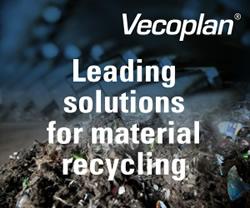This white paper aims to shed light on the impact of soiling on PV panels and the importance of proper maintenance to ensure optimal functioning.
The Effect of Soiling and the Importance of the Maintenance of Photovoltaic (PV) Panels
Katerina Begkai | SolarCleano
The global energy landscape is shifting towards renewable sources, and solar energy is playing a vital role in this transition. The increasing demand for clean and sustainable energy has put photovoltaic (PV) panels at the forefront of this movement. Although solar energy offers numerous benefits, it also faces challenges such as soiling that affects the performance and efficiency of PV panels. This white paper aims to shed light on the impact of soiling on PV panels and the importance of proper maintenance to ensure optimal functioning.
What is soiling?
Soiling is a phenomenon where a layer of organic and inorganic contaminants accumulates on the surface of photovoltaic (PV) modules. This accumulation affects the optical and performance properties of PV modules and is caused by a wide range of materials, including snow, dirt, dust, leaves, pollen, and bird droppings.
The presence of soiling negatively impacts the economic profitability of photovoltaic installations by decreasing energy conversion efficiency and increasing operating and maintenance costs. A study by Ilse et al. (2019b) estimated that soiling reduces global solar production by at least 3-4%, equivalent to revenue losses of €3 billion to €5 billion per year.
Given the increasing installation of PV plants worldwide, especially in arid regions with high sun hours, soiling has become a topic of significant interest for the global PV industry. Efforts are being made to optimize clean-up scenarios and minimize the impact of soiling on the performance of photovoltaic panels.
How to monitor photovoltaic soiling?
The advancement of technology has brought about new and innovative solutions in the field of soiling monitoring in photovoltaic (PV) panels. To reduce costs and increase reliability, a new class of soiling monitors has been developed, including optical soiling measurement (OSM) sensors. These sensors estimate the soiling ratio on PV glass based on the optical characteristics of the accumulated soiling.
This new class of soiling monitors provides a promising solution for maintaining the efficiency of PV panels through accurate and cost-effective soiling monitoring.
DustIQ Soiling Monitoring System - Atonometrics’ Mars Soiling Sensor
A collection of dust from various locations:
.png)
Soiling can come from different sources and therefore have different colors. SolarCleano robot has four types of brushes for both wet and dry cleaning to address different types of soiling. We evaluate the location of PV installations to determine the nature of the soiling and recommend the appropriate brush for the robot and the optimized cleaning frequency.
For dry cleaning of dust or sand, we recommend the blue brush, commonly used in the Middle East and Latin America. For general cleaning of bird droppings and soft soiling, a combination of yellow brush and green brush is often used.
.png)
The red one is mainly used for floating installations and for tough cases such as bird droppings and lichen. The helical bristles of the brushes effectively remove dirt and quickly discharge it from the panels, thus preventing soiling and preserving the panels.
SolarCleano, the innovative robotic solar panel cleaning solutions
SolarCleano is a leading robotics company based in Luxembourg that specializes in providing innovative, autonomous, and semi-autonomous cleaning solutions for solar panels. By leveraging its expertise in mechanical design and extensive solar panel cleaning experience, SolarCleano has quickly established itself as a pioneer in the industry.
In just four years, the company has developed six state-of-the-art robots to meet the needs of various types of installations. These robots, equipped with advanced patented technology, are now operating in 70 countries across five continents and providing superior-quality cleaning services with the support of a highly qualified and multilingual after-sales team.
The SolarCleano robots use cutting-edge technology, such as artificial intelligence to identify energy inefficiencies in solar panels and navigation systems based on global satellite systems for precise positioning, even in tough environments like deserts.
In 2022, SolarCleano cleaned 13 GW of solar installations worldwide, and with the continued growth of its global market, the company is transforming from a mechanical design firm to a service and robotics company with a focus on automation.
Conclusion
Reducing Energy Costs in PV Panels through Robotic Cleaning and Maintenance
The photovoltaic (PV) industry has been expanding rapidly in recent years, with solar energy playing an increasingly important role in the global energy mix. However, the efficiency of PV panels can be negatively impacted by soiling, which reduces their energy output. To address this challenge, SolarCleano has developed a line of autonomous and semi-autonomous robots that provide a superior solution for maintaining the efficiency of PV panels.
The main objective of the SolarCleano solution was to create a robot that could safely clean PV panels while minimizing the potential for interference with electrical components.
SolarCleano also places a strong emphasis on user-friendliness, recognizing that simplicity and ease of use are key characteristics of effective technologies. The SolarCleano robots are designed to be easily disassembled into four parts by one person in just three minutes and feature a straightforward navigation system to ensure efficient cleaning operations.
In conclusion, the SolarCleano robot represents a significant advance in the field of cleaning and maintenance for PV panels. By reducing soiling and maintaining panel efficiency, SolarCleano is helping to further the growth of the PV industry and drive the global transition to a cleaner, more sustainable energy future.
References
[1] F. Mohd, S. Mekhilef, M. Seyedmahmoudian, and B. Horan, “Dust as an unalterable deteriorative factor affecting PV panel efficiency : Why and how,” Renew. Sustain. Energy Rev., vol. 65, pp. 1267–1278, 2016
The content & opinions in this article are the author’s and do not necessarily represent the views of AltEnergyMag
Comments (0)
This post does not have any comments. Be the first to leave a comment below.
Featured Product

